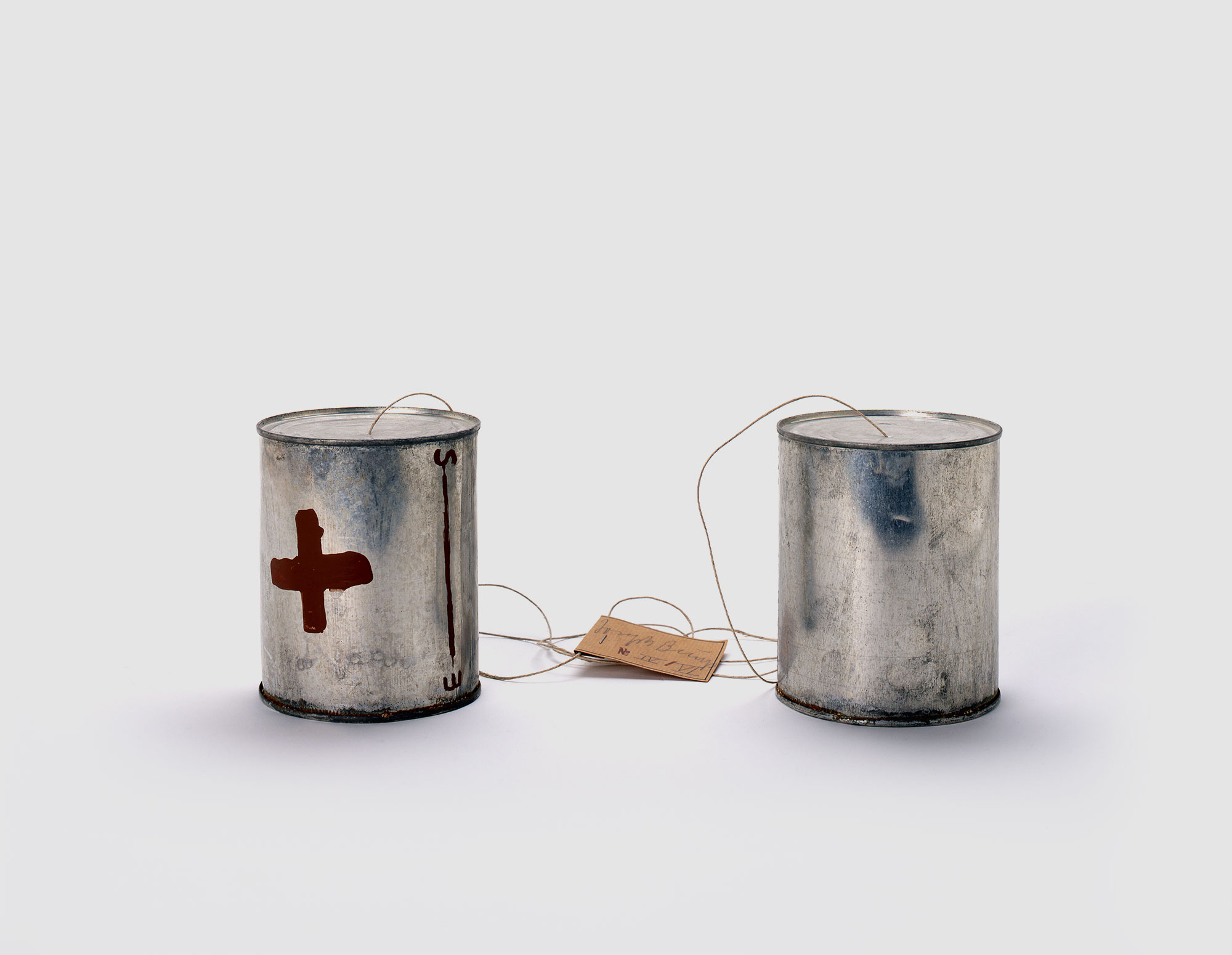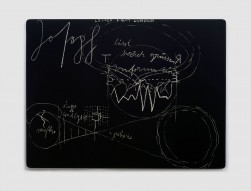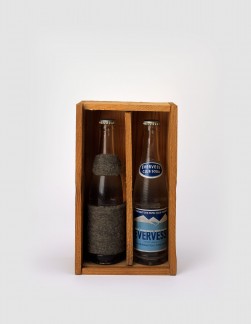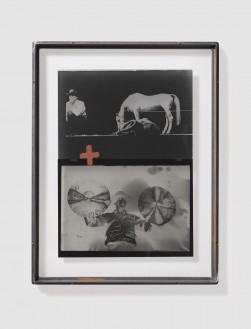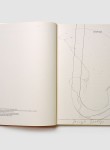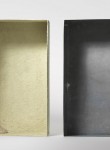Telephone T——Я
[Telephon S------Ǝ]
- 1974
- Two tin cans, one with brown paint (Browncross); string, label
Cans 12 cm x 10 cm dia. each - Edition: 24 plus VI, signed, numbered on label; plus a few unnumbered a.p.; plus 6 with paint (Browncross) on second can as well
- Publisher: Edition Schellmann, Munich
- Catalogue Raisonné No.: 136
This work’s title and its two tin cans, connected by a length of twine, evoke a simple tool for communication: an old-fashioned children’s toy telephone. On the side of one of the cans, Beuys painted the letters S and E, which serve as acronyms for Sender [transmitter] and Empfänger [receiver]. Connected by a straight line, the letters not only suggest how this multiple might function, but also bring to mind the flow of information between two connected parties. This Transmitter–Receiver diagram appeared often in Beuys’s drawings, and on one occasion he described its connecting line, which signifies a sound wave, as a rudimentary, auditory sculpture.1
The square cross which appears alongside the diagram was another common presence in Beuys’s work. Invested by the artist with a shifting array of meanings, it here suggests the union of two separate elements that the process of communication entails. For this process to succeed, it must of course be a two-way event, and it was to stress this need for reciprocity that Beuys rotated the letter E to face the S.2
Communication resided at the core of Beuys’s work: public performances and lectures became as much a part of his practice as traditional forms of art-making like drawing and sculpture. In light of this focus, it is little wonder that he produced works like this telephone, which takes the exchange information as its explicit theme.
See Beuys’s comments concerning the sculptural character of thought, speech and sound in Volker Harlan, Was ist Kunst? Werkstattgespräch mit Beuys (Stuttgart: Urachhaus, 1988), 81. ↩
As noted by Beuys in ‘Letter from London: Joseph Beuys im Gespräch mit Willi Bongard,’ in Schellmann (ed.), Joseph Beuys: Die Multiples (Munich, New York: Edition Schellmann, 1997), 559. ↩
© Mario Gastinger, Photographics, Munich
